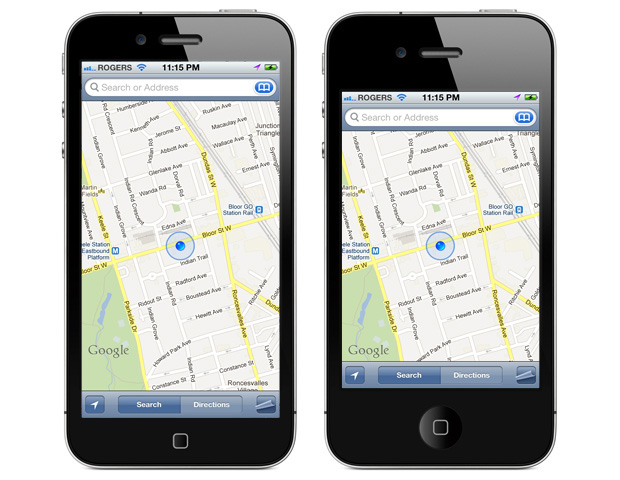Apple's next iPhone: 4-inch display; 12.5% more productivity


The folks at the kerning-challenged 9to5Mac say that they believe Apple is in the process of testing "multiple next-generation iPhones," at least one of which has a larger, higher-resolution display.
The stats:
- Today's iPhone 4: 3.5 inches diagonal, 3:2 aspect ratio, 640x960 pixels
- Tomorrow's iPhone: 3.999 inches diagonal (can't we just say 4, people?), almost 16:9 aspect ratio, 640x1136 pixels.
These numbers sound awfully precious for a company as decisive as Apple, but interesting nonetheless. 9to5 says Cupertino isn't just enlarging the display at the existing resolution, but actually adding pixels.
How this will play out in practice -- again, this is all hypothetical, as these things tend to be -- could be interesting. 9to5 suggests more real estate for video watching; what comes to mind here at ZDNet is more real estate for PDFs, Powerpoints and all matter of business documents that leave much to be desired on a smartphone's screen.
There remain several variables:
- Apple could pick any of the three known test device models, meaning that the bigger display could still be killed off before introduction.
- Will it develop iOS 6 accordingly? More icons and notifications legroom on the home screen, sure. But what will developers say? Seems like a slight break in developmental continuity.
In general, I worry about a conceptual boost in display size. A bigger phone is not necessarily better -- sorry, Android fans -- and pocketability remains important. On the other hand, a slight increase could relieve a few nagging issues (e.g. multimedia viewing, scrolling) with the smaller format without turning the thing into an iPad-like device -- after all, there's plenty of room for more screen on today's iPhone, preserving its physical dimensions and eating away only at the sizable bezel.
But the more I dig into the details of this, the more sense it makes. It's an incremental change, and it might let us see one more row in Excel spreadsheets. If that's all it is, why not?
Illustration: Niilo Autio